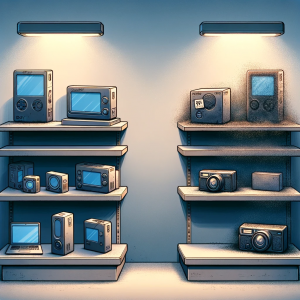In the rapidly evolving world of B2B Software as a Service (SaaS), we often encounter a curious paradox: the best product does not always win. This phenomenon, puzzling at first glance, reveals deeper insights into market dynamics and what truly drives success in the SaaS industry. Let’s explore why superior products might be overlooked and what factors contribute to a SaaS product’s success.
Market Timing: The Early Bird vs. The Right Moment
One crucial factor is market timing. Being first to market can offer tremendous advantages – name recognition, first choice for searching solutions, and setting industry standards. However, entering the market too early can be as detrimental as being too late. If the market isn’t ready or aware of the need for your solution, even the best product can struggle.
Example: CRM Software Evolution
Consider the evolution of CRM software. Early versions were robust but complicated, and businesses weren’t ready to integrate them into their operations. Then came simpler, more user-friendly solutions like Salesforce, which arrived not first, but at the right time when businesses were ready to embrace digital CRM solutions.
Superior Go-To-Market Motions
A superior go-to-market strategy often trumps product superiority. This involves understanding the market, creating a compelling marketing message, and having an effective sales strategy.
Example: Slack vs. Traditional Communication Tools
Slack, when introduced, wasn’t the only team communication tool available. However, its go-to-market strategy focused on ease of use and integration capabilities, quickly making it a preferred choice over more established, complex tools.
Articulating Client Needs and Development Focus
The ability to articulate client needs and develop products accordingly is another key to success. Products that may be technically superior but don’t address specific customer needs can easily fall behind.
Example: Zoom’s Rise in Video Conferencing
Zoom is a prime example. While not the first video conferencing tool, its success came from understanding and addressing specific user needs: ease of use, reliability, and good video quality, even on lower bandwidths.
Alignment of Product Value to Customer Pricing
Lastly, how a product’s value aligns with its pricing is a significant determinant of its market success. The best product might not win if it’s priced in a way that doesn’t align with the perceived value in the eyes of the customer.
Example: Adobe Creative Cloud
Take Adobe Creative Cloud’s shift to a subscription model. This change wasn’t just about moving to the cloud; it was a re-alignment of product value to customer pricing. It made high-quality, professional software more accessible and scalable for different customer segments.
Conclusion
In conclusion, while having a superior product is important in the B2B SaaS market, it’s not the only factor in winning the race. Timing, a well-crafted go-to-market strategy, a keen understanding of client needs, and pricing alignment are equally crucial. Success in B2B SaaS is multifaceted, and companies that recognize and master these areas are often the ones that lead the pack, irrespective of whether they have the ‘best’ product on a technical level.







